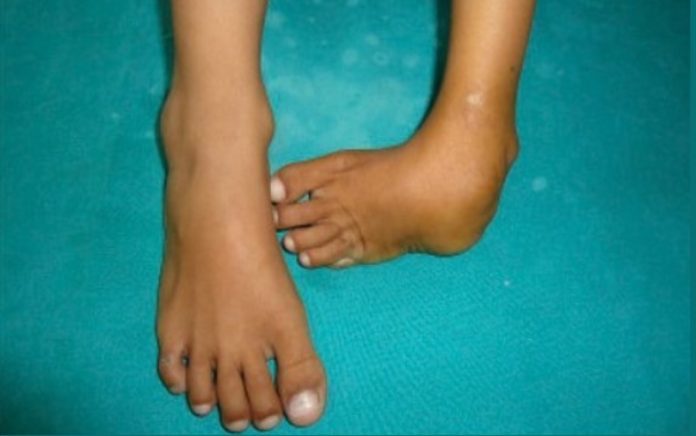Limb reduction defects are some of the more common birth defects. On the streets and at the hospital, you may have encountered someone who’s lower or upper limbs are disproportionate. These could one arm or leg. Unlike other more severe forms of birth defects, this type of birth defect is more manageable when orthopedic treatment and therapy are sought early and the defect is fully understood. So what is this condition and how can you manage it if you have a baby living with it?
What is it?
According to the Centre for Disease Control (CDC), limb reduction defects involve missing tissue or bone in any part of a limb or limbs. These defects will vary in their severity. They may range from missing fingers or toes to the complete absence of one or both arms, feet, or even legs.
“Upper and lower limb reduction defects occur when a part of or the entire arm (upper limb) or leg (lower limb) of a fetus fails to form completely during pregnancy. The defect is referred to as a limb reduction because a limb is reduced from its normal size or is missing,” the CDC states. It is estimated that upper limb defects occur twice as often as lower limb defects.
What causes limb reduction defects?
The actual cause of limb reduction defects is unknown. However, there are certain factors that will predispose a baby to these defects. According to the CDC, these factors include exposure of a pregnant mother to certain chemicals or viruses, exposure of a pregnant mother to certain medications, and exposure of a pregnant mother to tobacco smoking. The risky drugs and chemicals include anti-seizure medications, antihistamines, anti-nausea medications, sedatives and pesticides.
Squint eyes: Causes, symptoms and how to help your child regain normal sight
At the same time, limb reduction defects are associated with other birth defects. According to the CDC, there is the possibility of baby with heart defects, omphalocele, and gastroschisis having limb reduction defects. “Omphalocele is a birth defect of the abdominal wall. With this defect, the baby’s intestines, liver, and other organs stick outside of the belly through the belly button.
These organs are covered in a thin, nearly transparent sac that hardly ever is open or broken,” states the CDC. Gastroschisis is also a birth defect of the abdominal wall. “However, with this defect, the baby’s intestines are outside of the baby’s body, exiting through a hole beside the belly button. The hole can be small or large and sometimes other organs, such as the stomach and liver, can also be found outside of the baby’s body,” the CDC explains.
Management
When managing limb reduction defects, you will need to first have your baby examined at the hospital. This medical examination will be to check for complications associated with limb reduction defects. The examination will mainly look at the baby’s heart, kidney, and gastrointestinal system. Once this is done, and depending on the baby’s age and the doctor and prosthetist’s recommendation, your baby may be set up for an artificial limb. In Kenya, the cost of an artificial limb can be quite high.
For instance, an artificial leg would cost Sh. 300,000 depending on size. However, there are orthopedic centres that offer patients subsidized prices. One of these is the Cure Centre in Kijabe where an artificial leg will be discounted by Sh. 230,000 to cost Sh. 70,000. At this centre, needy children will also get artificial limbs for free.
Other medical hospitals where you can find specialized orthopedic management for limb reduction defects include the North Kinangop Catholic Mission Hospital, mission hospital that also specializes with orthopedic surgeries and prosthesis. If you have financial muscle, you may also go for bionic arm for your child if they have missing hands or forearms.
This is a life-like hand that can open and close through nerve impulses in the child’s upper arm. There also better options for advanced lower artificial limbs that will make your baby’s walking style more natural by reducing the extent of their limp. There are also defects where a baby is born with short limbs such as one shorter leg. In Kenya, mission hospitals such as Kijabe have been known to provide adjustable, special shoes for leg length discrepancy.
Prevention
The CDC notes that there are a few steps a pregnant woman can take to reduce the chances of having a baby with birth defects. “These include taking a daily multivitamin with folic acid at 400 micrograms, not smoking, and not drinking alcohol during pregnancy,” states the CDC.








